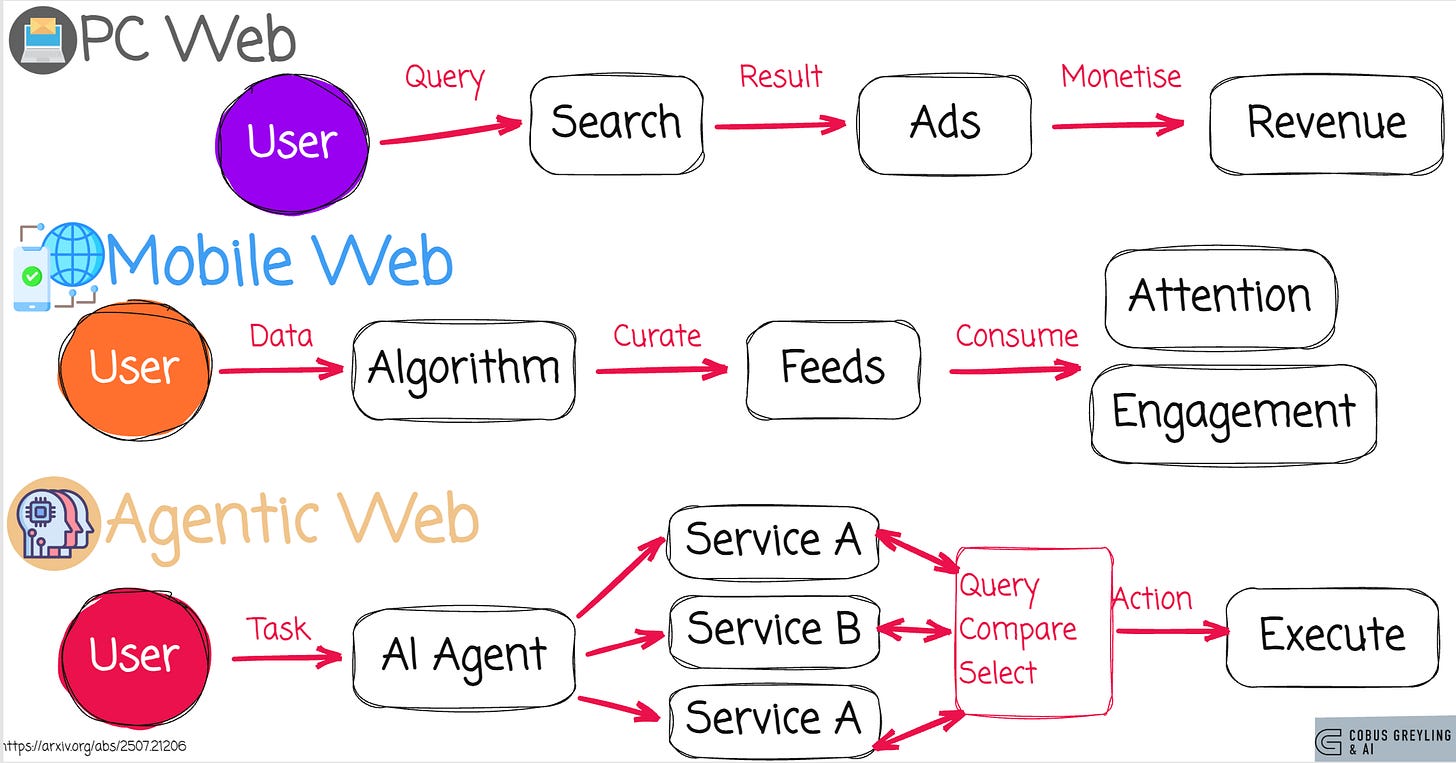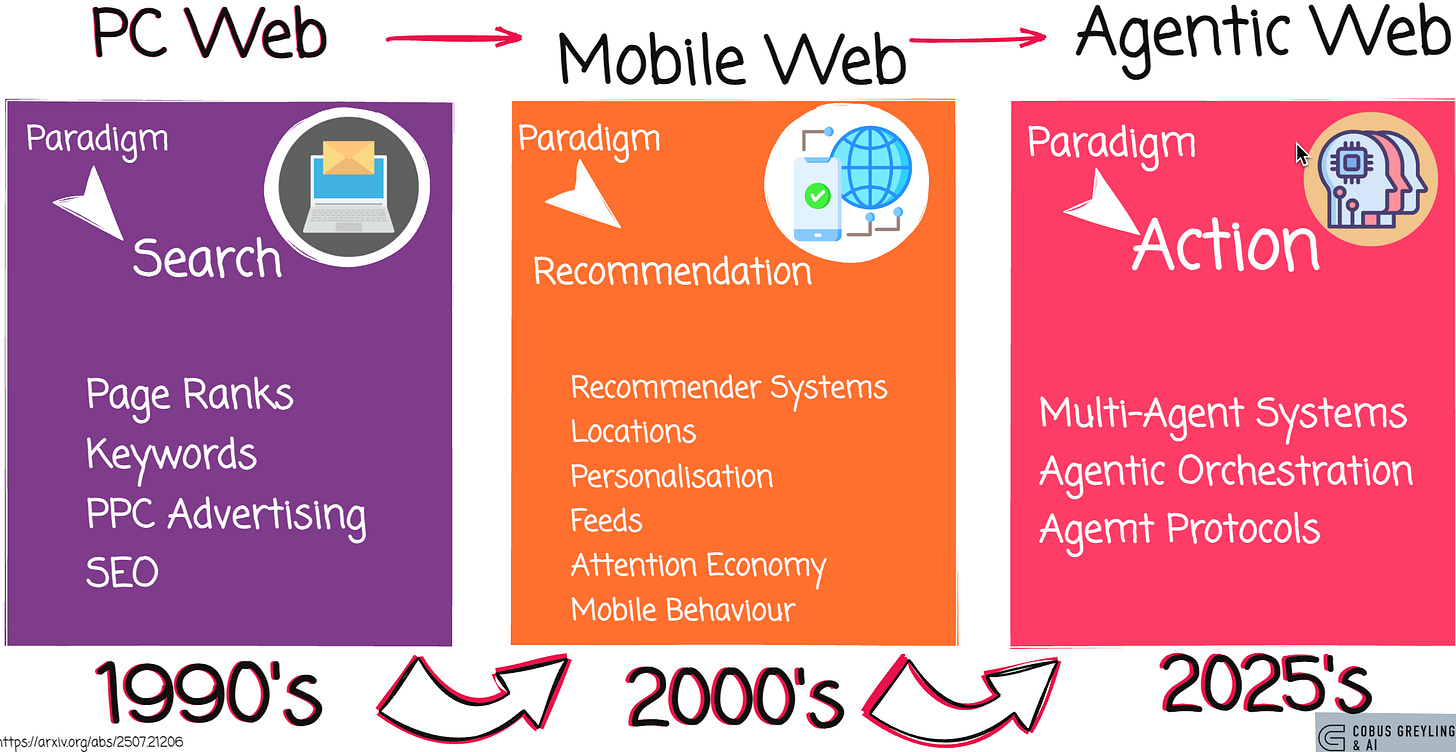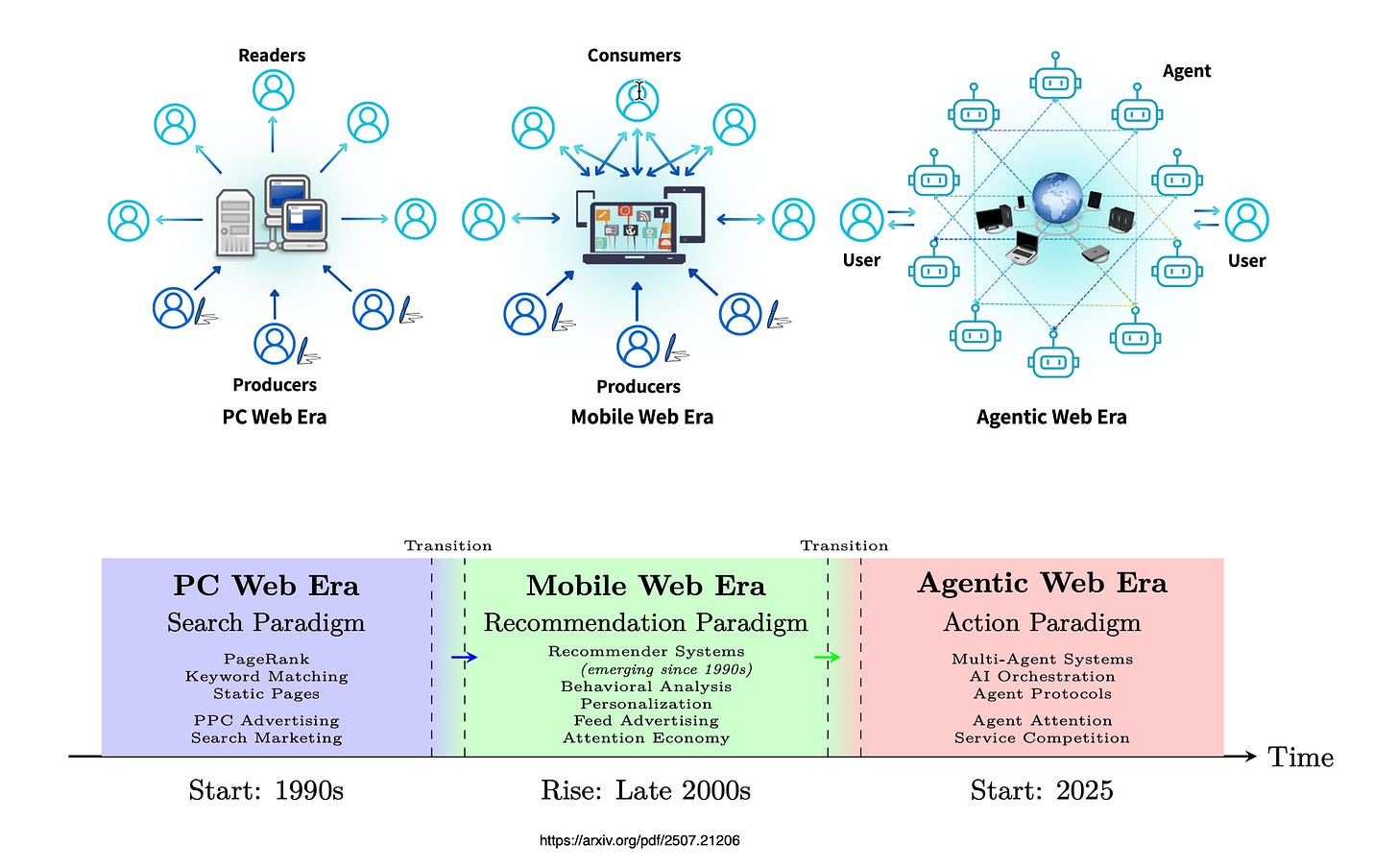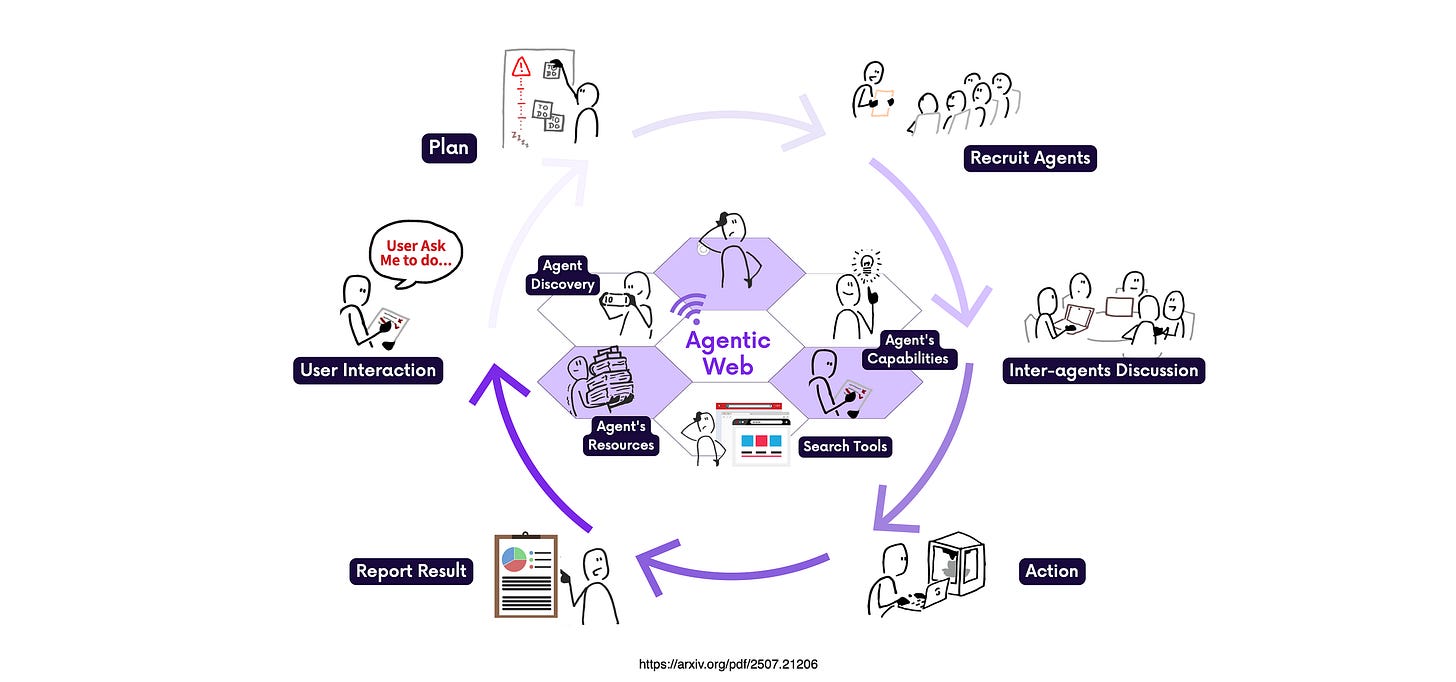From PC Web, To Mobile Web, To Agentic Web…
I'm old enough to remember the dawn of the digital era - when maps, documents and every analog artefact had to be painstakingly scanned and digitised, one page at a time…
As digital became not only a single department in a larger organisation, but a new way of working and expanded into every aspect of business, there was really no need for digitisation, or digital data capturing.
Because now the process was digital from end to end.
This digital world was then transferred to the internet…
This original Web was fundamentally about search, pages, connections, linking users to content, services…and also people to one another.
The Web has long served as a platform for connectivity linking people to information, services, and one another.
Then the mobile web introduced a different dynamic.
Data as underpinned by location, searches, services, gleaned preferences, and connections, all relative to a geographical location.
The mobile web was more personal, based on recommendations, feeds and people’s mobile behaviour.
Feeds and infinite scrolling introduced the attention economy…
Now we interacted with the web differently, the mobile web became personal and granularly curated for the specific user.
The Agentic Web, a new phase of the internet defined by autonomous, goal-driven interactions.
In the new paradigm of the Agentic Web, AI Agents will interact directly with one another to plan, coordinate and execute complex tasks on behalf of users.
Currently the impediments are cost (inference), latency and accuracy for jobs. Models are very efficient at tasks…but jobs are more noisy and nuanced.
Think of jobs as a collection of different tasks strung together.
One needs to keep in mind, while GenAI tools perform well on structured or repetitive tasks, they often struggle with skills that require contextual understanding, planning, or emotional intelligence.
Intent delegation relieve users from routine digital operations & enable a more interactive, automated web experience.
For example, with the traditional web, booking a flight is a hands-on process handled entirely by the user.
It usually starts with browsing travel sites, inputting search details, tweaking filters, juggling tabs to compare prices and schedules across sites, and ultimately selecting and confirming the reservation.
Though tools like recommendation systems, intuitive designs, and smart search features can help, the entire workflow stays under the user’s control, demanding constant, sequential effort.

The agentic web has the process shifting to intent-sharing.
The user issues a broad directive, like Book a flight to New York next weekend under my budget and a self-sufficient AI Agent takes over.
It independently navigates APIs and websites, scans and interprets data, tailors choices to personal tastes… and seals the deal.
Potentially looping through refinements or teaming up with other AI Agents, all without needing a single follow-up from you.
The Agentic Web is a dynamic network where AI Agents operate independently, transforming the internet into an ecosystem of autonomous action and machine-to-machine collaboration. At its core are three essential conditions.
AI Agents act as autonomous intermediaries…
They initiate and complete complex tasks without human intervention — such as compiling a custom travel plan from scattered data sources or analysing market trends across platforms — handling every step from planning to execution.
Second, web resources must be accessible via standardised, machine-readable interfaces.
APIs and protocols provide clear, computable access to data, like real-time inventory feeds or sensor streams, eliminating barriers so agents can process information seamlessly and at scale.
Third, value exchanges occur directly between AI Agents, not just humans and systems.
Conditions to enable the Agentic Web incldues a practical evolution where
agents thrive,
resources flow freely and
value circulates efficiently
Positioning humans as strategic overseers rather than constant operators.
As seen above, the cycle begins with a user submitting a task request.
The system plans the task and identifies appropriate agents and tools.
Recruited AI Agents engage in inter-agent discussions, collaborate using their unique capabilities and resources, and execute the task.
The results are reported back to the user, completing the cycle.
The Agentic Web facilitates discovery, coordination, and cooperation among agents to fulfil user goals.
Chief Evangelist @ Kore.ai | I’m passionate about exploring the intersection of AI and language. Language Models, AI Agents, Agentic Apps, Dev Frameworks & Data-Driven Tools shaping tomorrow.
Agentic Web: Weaving the Next Web with AI Agents
The emergence of AI agents powered by large language models (LLMs) marks a pivotal shift toward the Agentic Web, a new…arxiv.org
GitHub - SafeRL-Lab/agentic-web: Agentic Web: Weaving the Next Web with AI Agents.
Agentic Web: Weaving the Next Web with AI Agents. Contribute to SafeRL-Lab/agentic-web development by creating an…github.com
COBUS GREYLING
Where AI Meets Language | Language Models, AI Agents, Agentic Applications, Development Frameworks & Data-Centric…www.cobusgreyling.com






